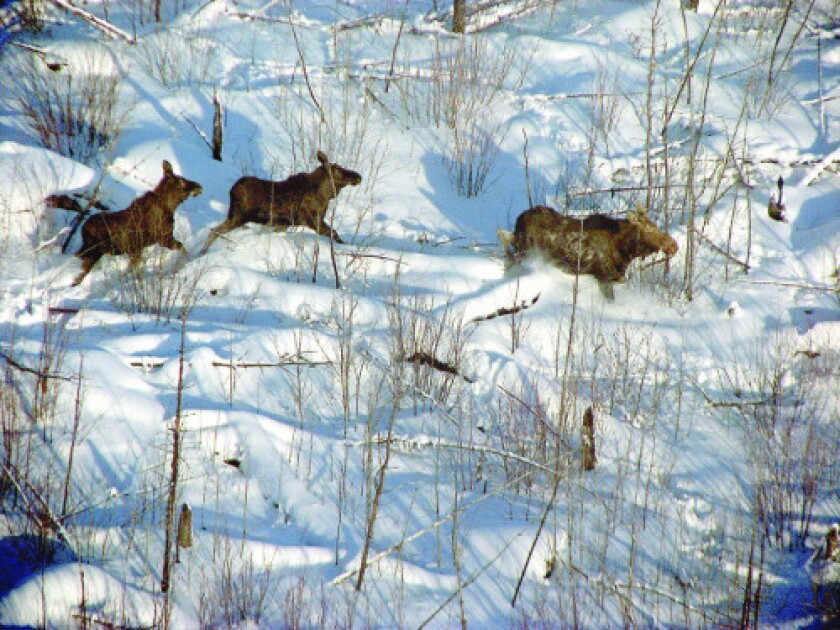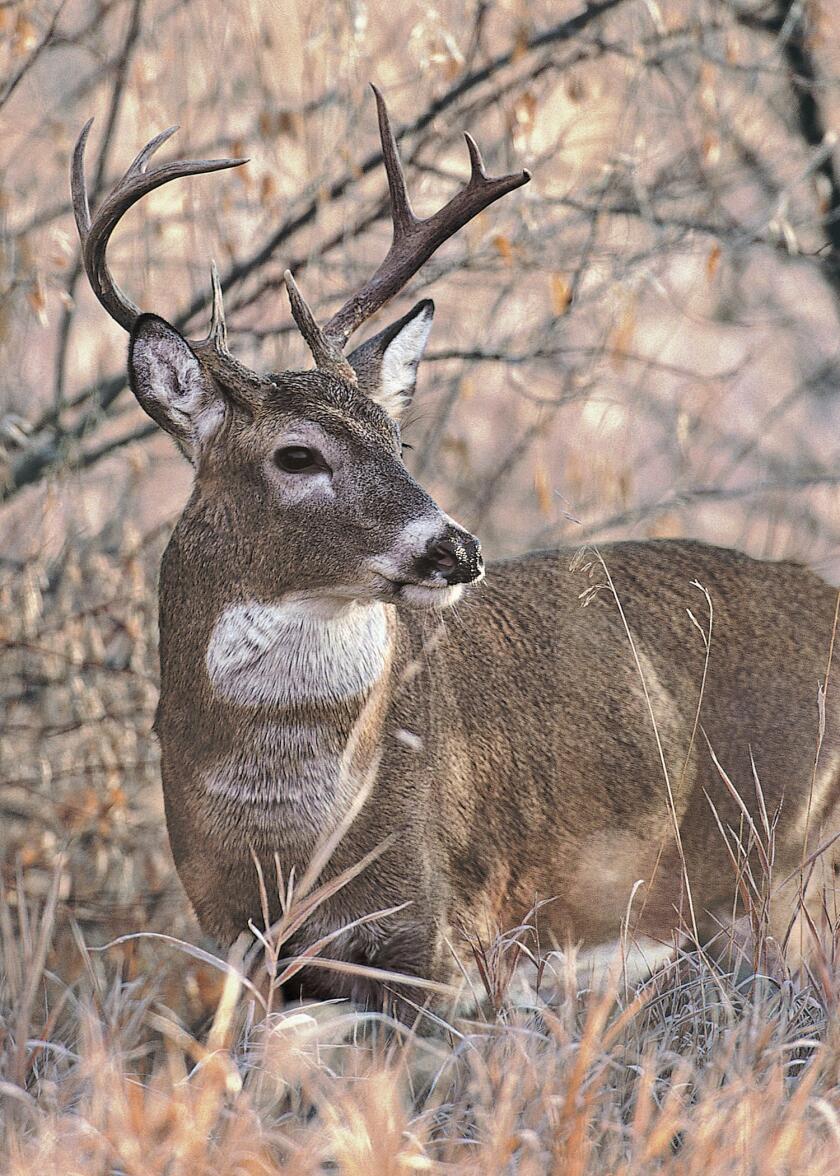DULUTH — Northeastern Minnesota’s moose herd continues to hang on, marking a decade with a low but stable population after a rapid decline in the early 2000s.
The Minnesota Department of Natural Resources on Monday reported the state’s moose population to be an estimated 4,700, statistically unchanged from the 2020 survey. The 2021 survey was canceled due to DNR COVID-19 precautions for researchers.
ADVERTISEMENT
In January wildlife biologists flew over parts of the state’s moose range — namely Cook, Lake and northern St. Louis counties — to count moose in specific zones. They then extrapolated their findings out over the entire moose range.
Northeastern Minnesota’s moose numbers crashed rapidly, from a modern high of 8,840 moose estimated in 2006 to just 2,700 by 2013. But this year’s survey marks a decade of relative stability which indicates the fear of losing moose entirely in Minnesota are calmed, at least in the short term.
“Although there is no statistically significant change in the estimated population relative to 2020, this year’s estimated number of moose is the highest since 2011, when the population was midway through a steep decline,’’ the DNR noted in its annual moose survey report.
This year’s aerial survey found calves comprised an estimated 19% of the population and an estimated 45 calves per 100 cows. That’s the highest both indicators have been since 2005, when the population was near its peak and considered healthy. Both factors are indicators of potential improvement in reproductive success, which has a positive impact on population numbers.
In 2005, when the moose population was healthy, 52% of all cow moose surveyed had a calf. That number dropped as low as 32% in the worst years recently but now has rebounded to 45%, the DNR survey noted, another positive sign for the future.
"It’s an encouraging result, but I think it’s too early to break out the champagne,'' said Mike Schrage, a wildlife biologist with the Fond du Lac Band's natural resources department and part of the moose survey team. "We need a couple more years with results trending in the same upward direction before I start feeling confident we’re experiencing a genuine recovery in moose numbers."
Both the Fond du Lac Band of Lake Superior Chippewa and the 1854 Treaty Authority contributed funding and personnel for the 2022 annual survey. The survey is available on the DNR’s moose management page at .
ADVERTISEMENT
The 4,700 estimate is considered a statistically significant point among a broader estimate of between 3,480 and 6,780 moose based on the partial aerial survey of the region.

It’s never been entirely clear why Northeastern Minnesota’s moose numbers crushed so fast and hard. It followed the nearly complete elimination of northwestern Minnesota’s moose herd in the 1990s. Scientists believe myriad factors, including a warming climate, are involved. Warmer winters with less snow allow more deer to move north, bringing along a brainworm parasite fatal to moose. It’s possible a recent string of snowy winters in Northeastern Minnesota, six of the last 10, have helped push deer numbers back down and allowed moose to thrive. Moose also aren’t suited to handle warmer summer temperatures.
Habitat is also an issue, with moose continuing to thrive in areas where major wildfires burned in recent years, where younger forests have sprouted, but not as much in areas where forests have matured.
A thriving wolf population also plays a role, especially after moose numbers crashed initially, with wolves focusing on the calves that are needed to annually rebuild the moose population. Because wolves thrive most on deer, northern Minnesota has among the highest wolf densities anywhere the big canines roam, not good news for newborn moose calves.
"If we really are at the start of an upward trend in moose numbers, lower deer numbers may have a lot to do with it,'' Schrage said. "Lower deer numbers should eventually lead to less brainworm transmission to moose as well as fewer wolves on the landscape to prey on moose. Moose are a harder animal for wolves to kill, and wolves probably can’t sustain their numbers at the same level if deer aren’t easily available as an alternate prey."










